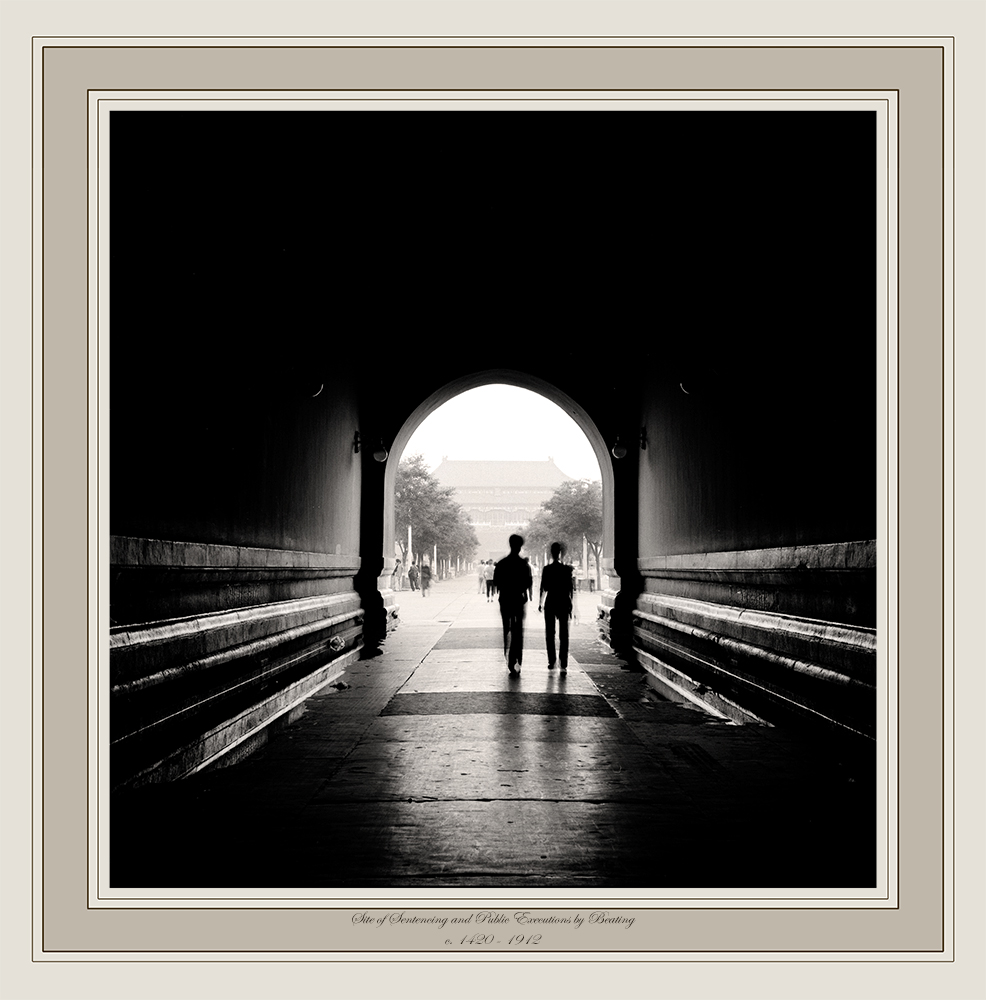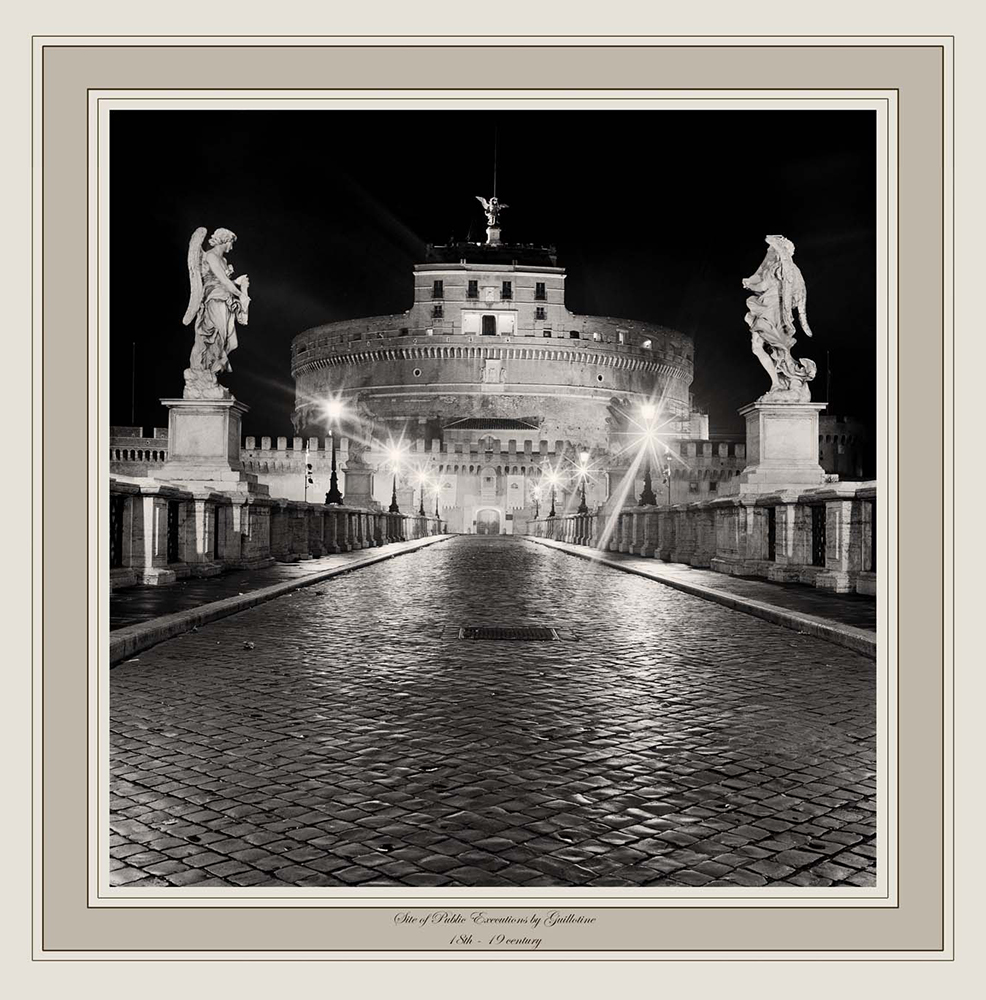Lana Z Caplan: History Based Landscapes
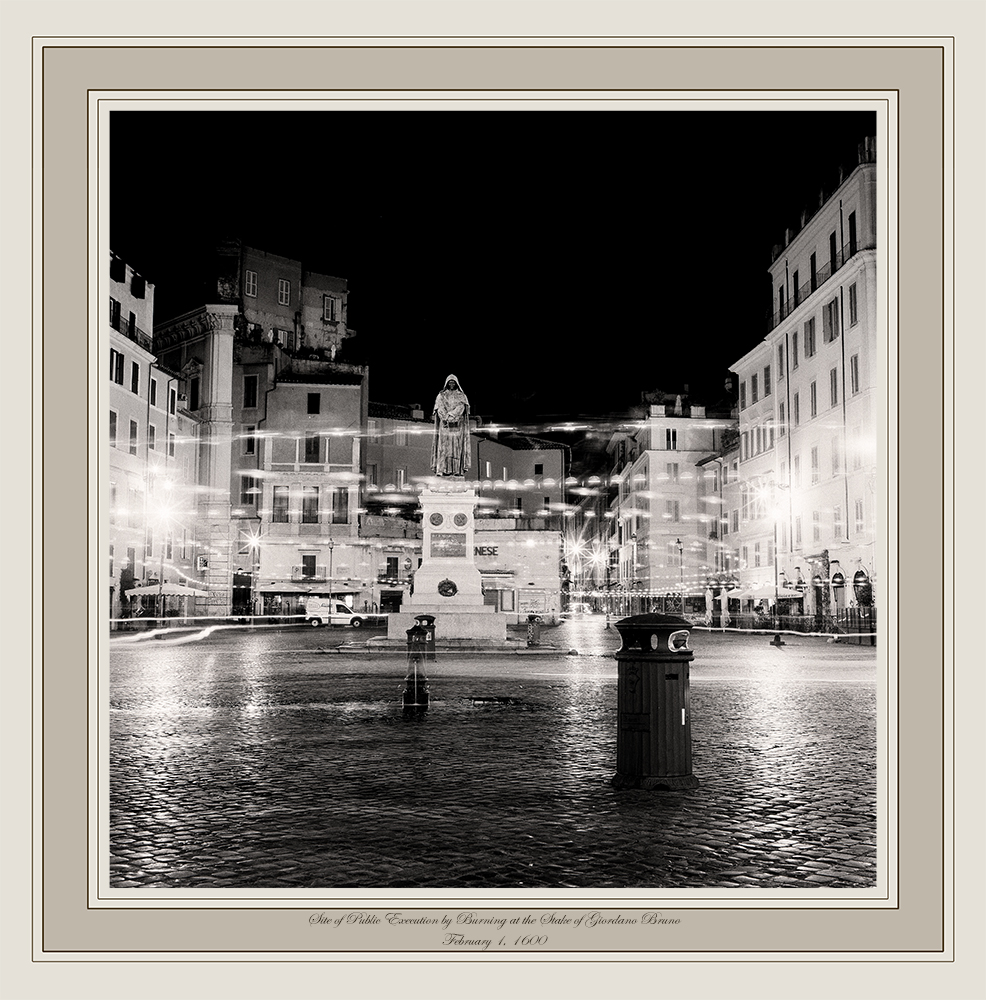
©Lana Z. Caplan, Site of Public Execution by Burning at the Stake of Giordano Bruno, February 17, 1600 (Campo de’Fiori, Rome)
Trauma and horrific histories are held in landscapes in every corner of the globe. For the past twenty years photographer, filmmaker, and educator Lana Z Caplan has been documenting sites of public killings in her project, Postcards from the Hanging: Sites of Public Execution. She shares some stunning statistics in her statement, “The United States is one of only 20 countries in the world that continues to employ state sanctioned killing. In 2019 we ranked 6th in the world in the number of executions following (in order) China, Iran, Saudi Arabia, Iraq, Egypt (execution totals not known for Vietnam, North Korea, and Syria).” Her thoughtful examination of why our country continues to allow the death penalty adds another layer to its history of pain and suffering.
Postcards from the Hanging: Sites of Public Execution is presented using French mats as a way to reference historical photographs and catalog of images made for documentation purposes.
California-based photographer and filmmaker Lana Z Caplan’s works are inspired by particular locations and sub-cultural notions of utopia – where one person’s utopia is often another’s undoing. Her work explores the implications of the social landscape on the physical landscape, unearthing buried or forgotten histories, and the transformative experiences images and social and immersive media have on our psyche.
Caplan has an international exhibition record including Museum of Contemporary Art (Tucson), Griffin Museum (Boston), Inside Out Art Museum (Beijing), National Gallery (Puerto Rico), Museo Tamayo Arte Contemporáneo (Mexico City). She published a monograph of her ongoing series Postcards from the Hanging in conjunction with a solo exhibition at the Danforth Museum in 2007. Her work has been recognized by grants, fellowships and awards including from the Massachusetts Cultural Council, Puffin Foundation and the Wexner Center for the Arts and reviewed in publications such as ARTnews, The Boston Globe, and Hyperallergic.com. She earned her MFA from Massachusetts College of Art in Photography and is currently an Assistant Professor and Area Head of Photography and Video at Cal Poly San Luis Obispo, CA. Caplan is represented by Gallery NAGA (Boston). Instagram: @insta_lana_gram

©Lana Z Caplan, Site of Public Execution by Tomahawk of Chief Leatherlips, June 1, 1810 (Franklin County, OH)
Postcards from the Hanging: Sites of Public Execution
Recorded across three continents and 20 years, this series includes photographs and short films from sites that have been used for public executions at different times in history.
The United States is one of only 20 countries in the world that continues to employ state sanctioned killing. In 2019 we ranked 6th in the world in the number of executions following (in order) China, Iran, Saudi Arabia, Iraq, Egypt (execution totals not known for Vietnam, North Korea, and Syria) . This practice is in opposition to the values and human rights our country espouses to hold. In addition, the more recent use of DNA has exonerated many death row and other inmates in the US. This calls the practice of killing convicted people further into question. Many innocent people in this country are falsely accused based on racial and other biases and, like the prison system, the death penalty disproportionally effects black and brown men.
At the time I began this ongoing project, due to the large number of families who had lost loved ones in the Oklahoma City bombing, people sought to see Timothy McVeigh’s execution on television, a modern form of the public arena. The desire to watch or show people being killed, perceived as justice, a political act or as spectacle, is still alive today as evidenced in the ghastly videotaped beheadings broadcast on Youtube and social media sites.
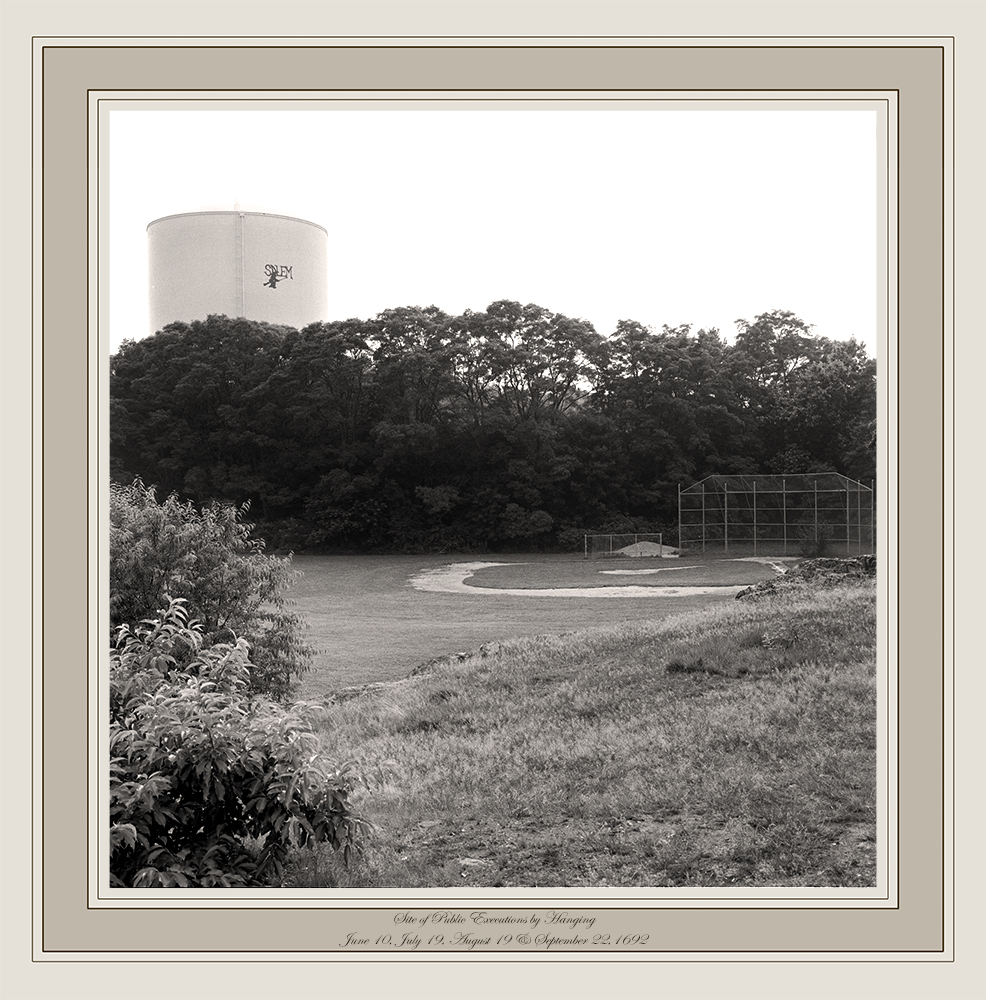
©Lana Z Caplan,Site of Public Executions by Hanging, June 10, July 19, August 19 & September 22, 1692 (Gallows Hill Park, Salem, MA)
I started this project with questions; What does a society choose to show of its history in public space? Are shifting values visible in the function of the space? Can images reflect the power of society to evolve a public consensus on state killing?
All the countries I visited other than the US and China have abolished the death penalty all together. All stopped public executions over 200 years ago, except China and the US. The last recorded public executions I found in these countries were in 1912. However, the recent murder of George Floyd could be viewed as a public execution by the state in 2020. What I found researching these sites were stories of dictatorship, superstition, religion, passion, sexism, racism and revolution. What I found visiting were sites that were quite venerated as places for public execution, such as St. Peter’s Square in Rome named after the executed St. Peter, or the field in Salem, Massachusetts (now named Gallows Hill Park) where accused witches were hung. And other sites that are now well known for other reasons, such as the Louvre, in front of which the guillotine was installed during the French Revolution. The different ways in which the presentation of history in these places is prioritized (some capitalizing on the executions, others concealing the execution history with other events that also occurred in these places) spoke more to me about present day morality and values in each country than the abolishment or continuation of capital punishment in those countries.
The photographs in this series are 14×14” sepia-toned silver prints presented in 20×21” French mats. This presentation is a reference to historical photographs and cataloguing of images made for documentation purposes. Each of the mats have calligraphic titles describing the dates and types of executions that occurred on that site, rather than the customary name and place pictured. – Lana Z Caplan

©Lana Z Caplan, Site of Public Execution by Hanging under the Charge of Sheriff Charles F. Prevatt, 1897 – 1905 and 1908 – January 19, 1912 (Osceola Courthouse, Kissimmee, Florida)
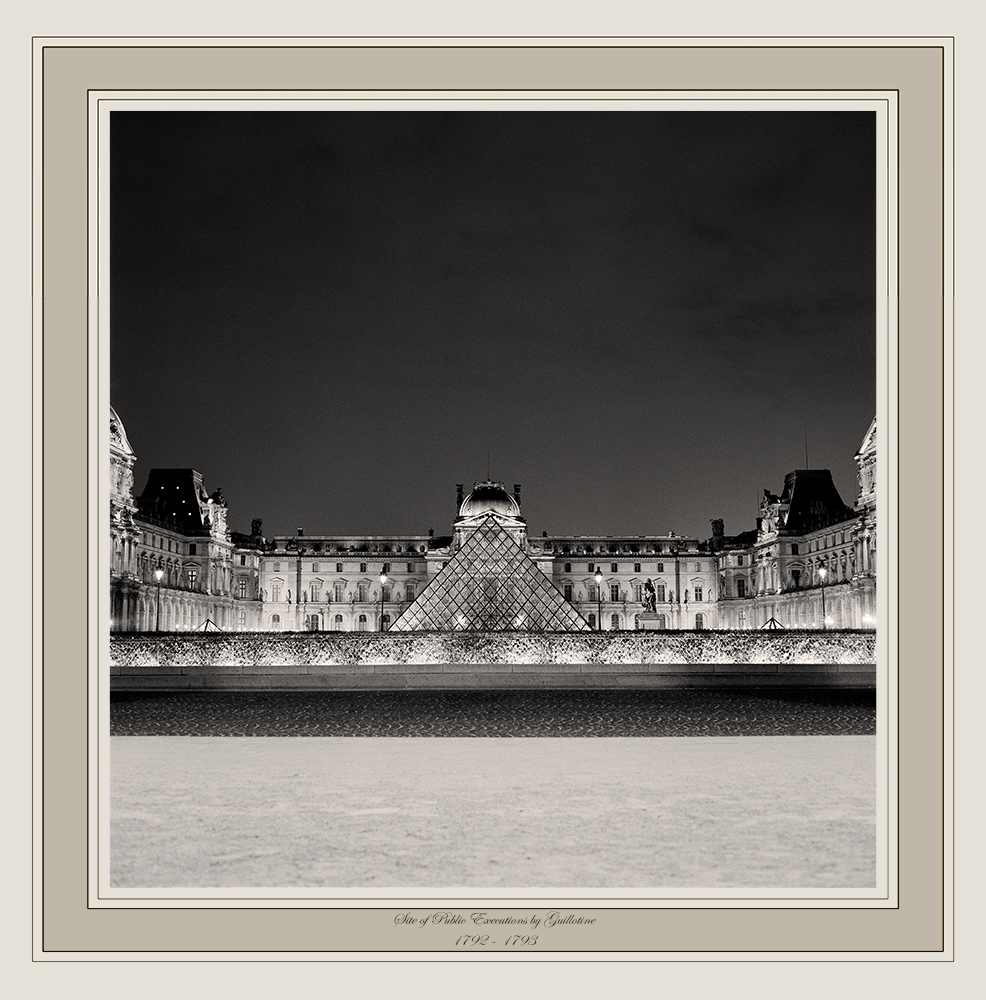
©Lana Z Caplan, Site of Public Executions by Guillotine, 1792-1793 (Place du Carousel, Louvre, Paris)
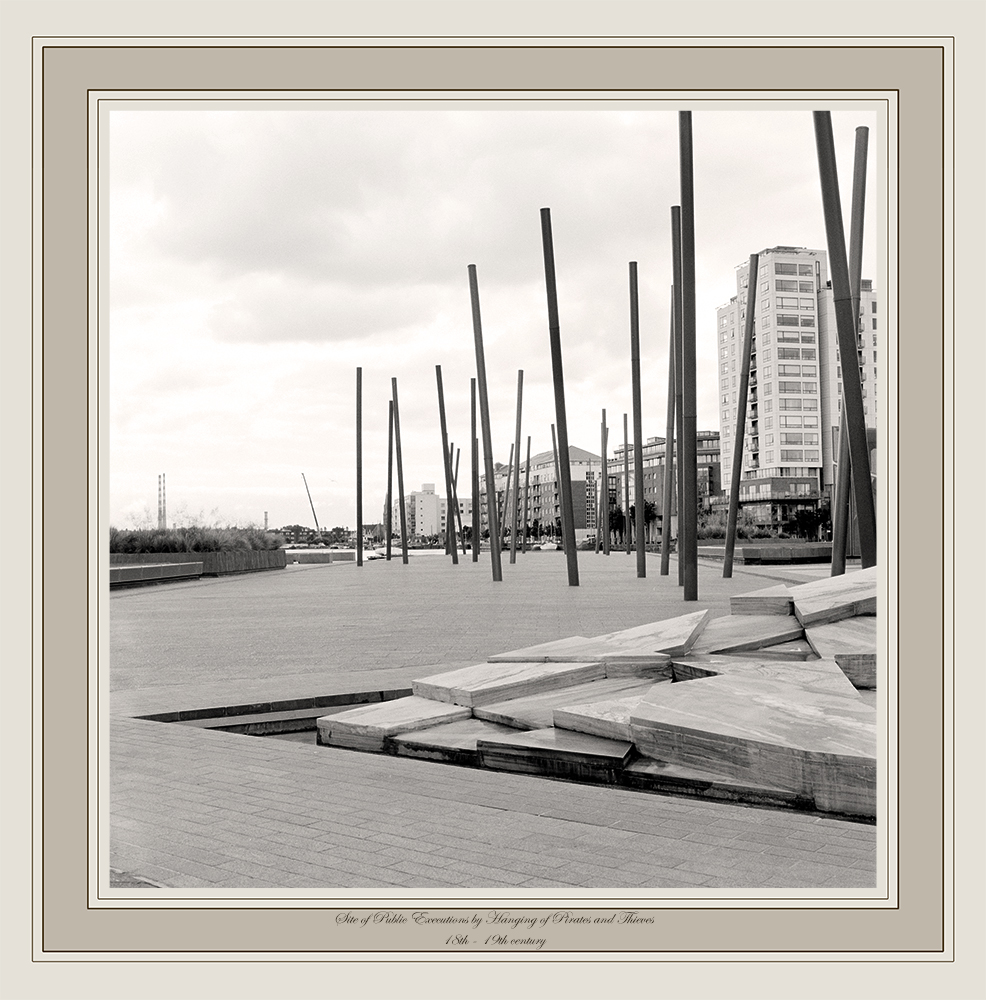
©Lana Z Caplan,Site of Public Executions by Hanging of Pirates and Thieves, 18th – 19th century (Grand Canal Square, Dublin)
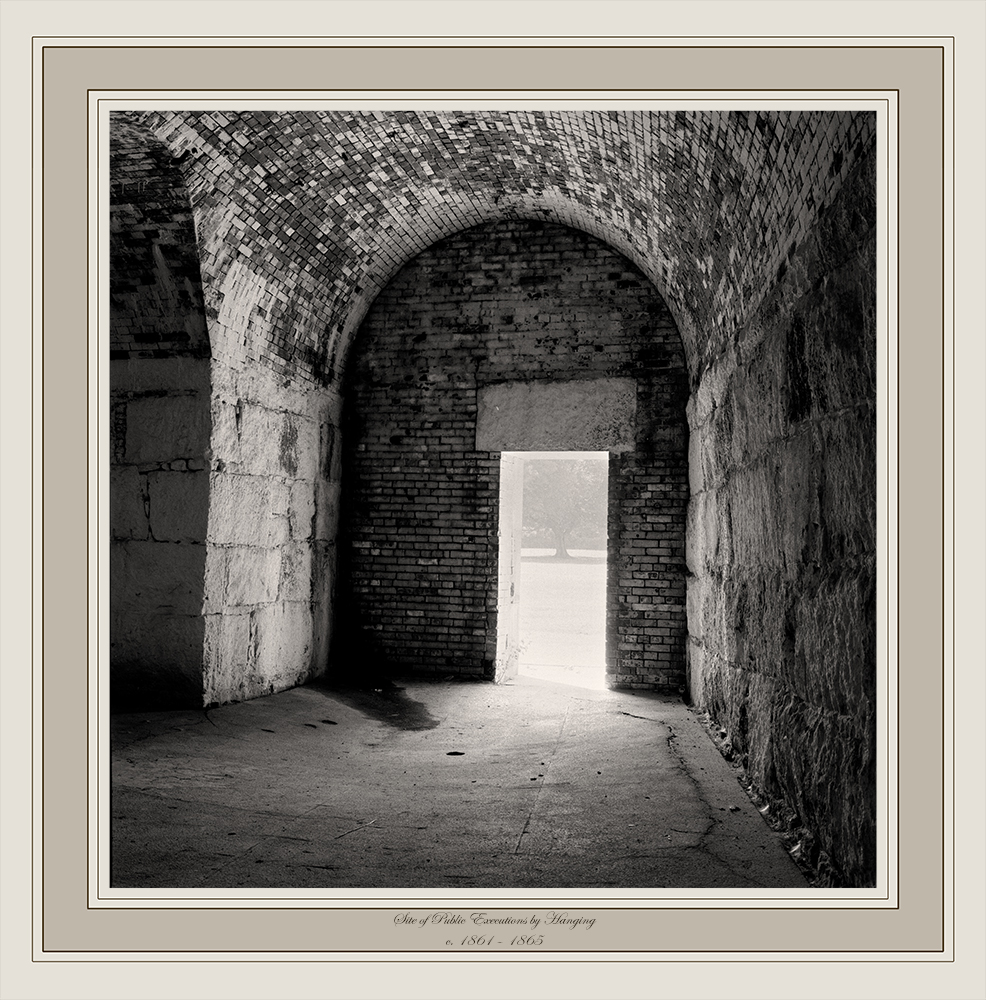
©Lana Z Caplan, Site of Public Executions by Hanging, c. 1861 – 1865, (Fort Warren on Georges Island, Boston Harbor, MA)

©Lana Z Caplan, Site of Public Execution by Crucifixion of St. Peter, c. 64 – 68 AD (Piazza San Pietro, Rome)

©Lana Z Caplan, Site of Public Executions by Hanging from the Tyburn Tree Gallows, up to 25 people hanging at a time, averaging 35 hangings per year, 1571 – November 3, 1783 (Marble Arch, London)
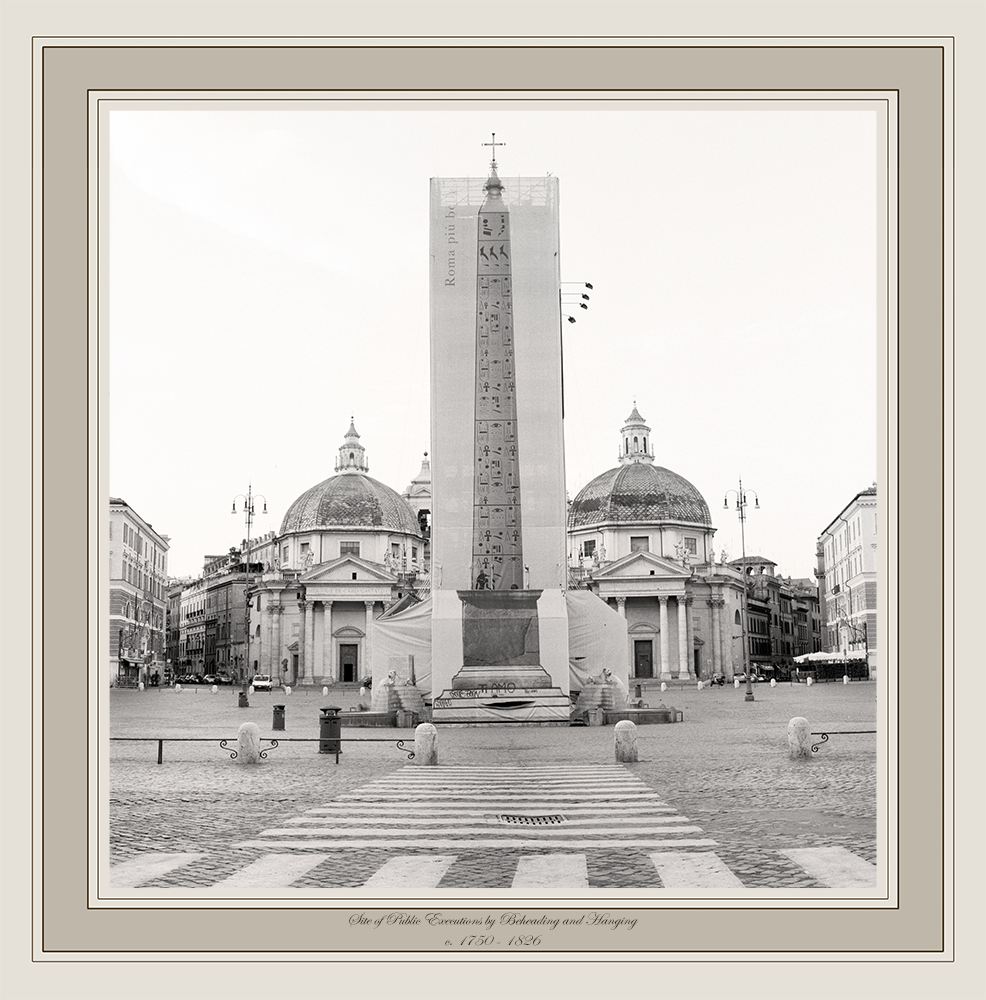
©Lana Z Caplan, Site of Public Executions by Beheading and Hanging, c. 1750 – 1826 (Piazza del Popolo, Rome)
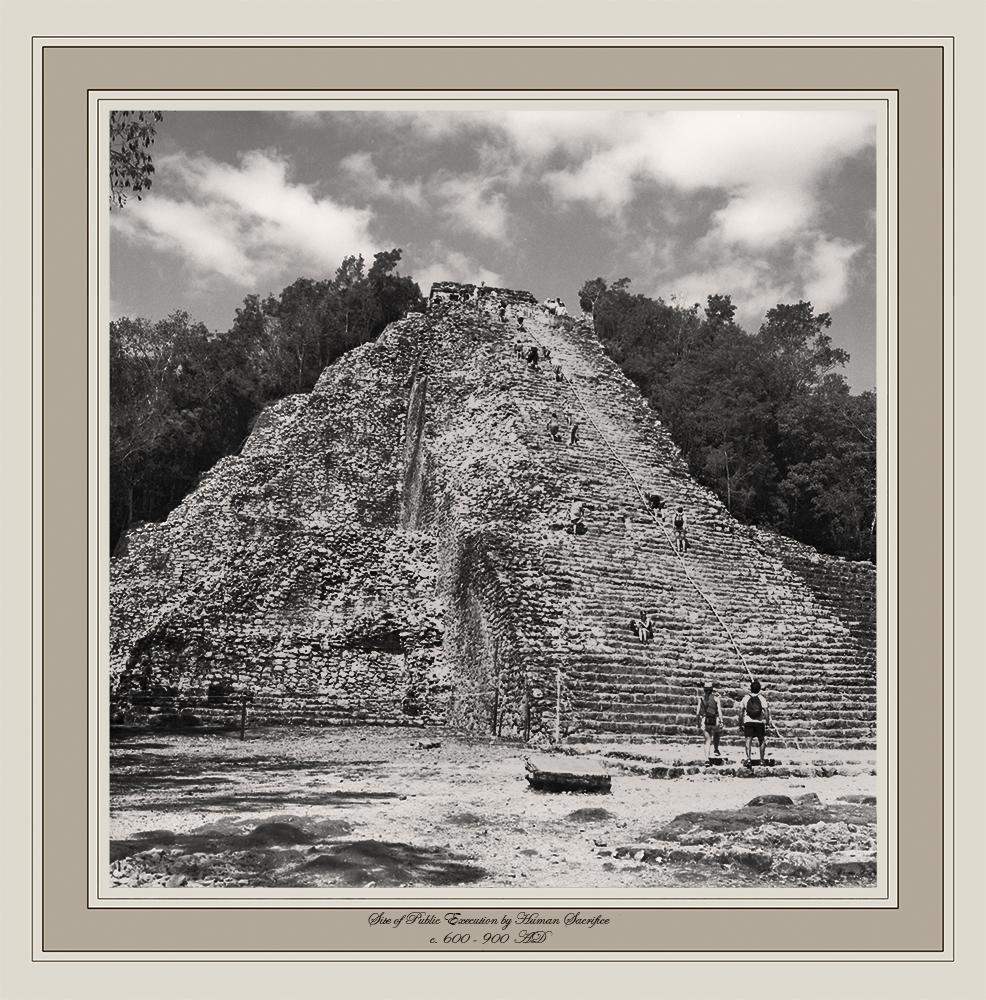
©Lana Z Caplan, Site of Public Executions by Human Sacrifice, c. 600-900 AD (Nohuch Mul Pyramid, Coba, Mexico)
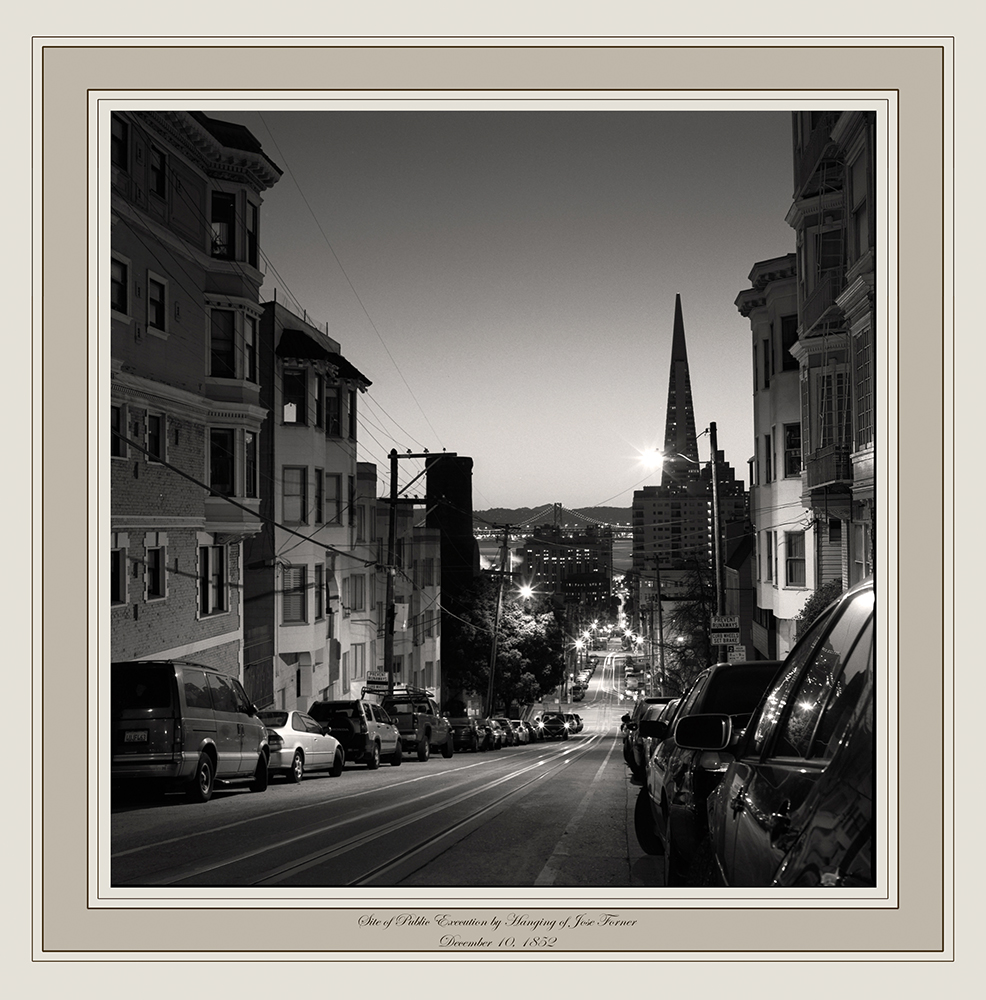
©Lana Z Caplan, Site of Public Execution by Hanging of Jose Forner, December 10, 1852 (Russian Hill, San Francisco, CA)
Posts on Lenscratch may not be reproduced without the permission of the Lenscratch staff and the photographer.
Recommended
-
Shinichiro Nagasawa: The Bonin IslandersApril 2nd, 2024
-
The International Women in Photo Association Awards: Lorraine Turci: The Resilience of the CrowMarch 16th, 2024
-
The International Women in Photo Association Awards: Rayito Flores Pelcastre: Chirping of CricketsMarch 14th, 2024
-
The International Women in Photo Association Awards: Louise Amelie: What Does Migration Mean for those who Stay BehindMarch 12th, 2024
-
Brandon Tauszik: Fifteen VaultsMarch 3rd, 2024


